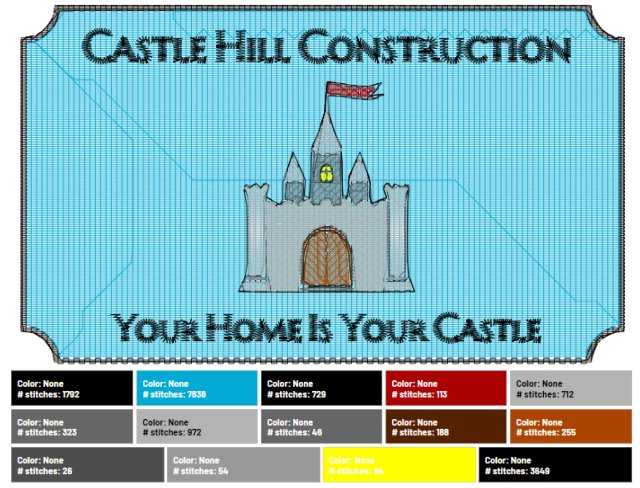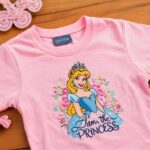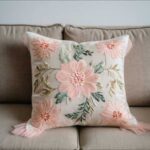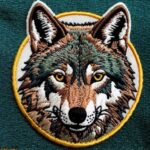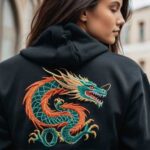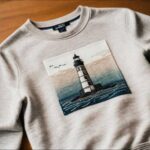Fortitude of Digitized Bliss
The Art of Creating Custom Embroidered Logos
Introduction
Embroidered logos are more than just embellishments; they are intricate representations of brand identity and craftsmanship. The process of creating custom embroidered logos involves a journey through meticulous design, thoughtful material selection, precise digitization, and rigorous quality control. Each step in this process contributes to the overall quality and durability of the final product, ensuring that every embroidered logo not only meets but exceeds expectations. This article delves into the multifaceted aspects of creating custom embroidered logos, highlighting the expertise and attention to detail required to bring a brand’s vision to life through embroidery.
Throughout this exploration, we will uncover the complexities involved in conceptualizing designs that resonate with brand values, selecting materials that enhance both aesthetic appeal and functionality, and employing advanced digitization techniques to ensure precision in execution. The art of embroidery merges traditional craftsmanship with modern technology, offering a blend of creativity and technical skill that defines the quality standards in the industry. This article aims to provide a comprehensive understanding of the meticulous processes and considerations that embroiderers undertake to deliver logos that not only adorn but elevate garments and accessories.
Conceptualization and Design
The creation of a custom embroidered logo is a multifaceted endeavor that begins with a solid concept and a meticulously crafted design. This phase is crucial as it lays the foundation for the entire embroidery process, ensuring that the final product accurately reflects the client’s vision and brand identity.
A well conceived logo not only serves as a visual representation but also encapsulates the essence of a brand’s narrative and values. Beyond aesthetic appeal, the design must resonate with the target audience, evoking emotions that align with the brand’s positioning in the market. Achieving this requires a deep understanding of design principles, psychology of colors, and cultural contexts.
Designers delve into extensive research to grasp industry trends and competitor analysis, ensuring the logo stands out while remaining timeless. The iterative nature of this process involves refining initial concepts through collaborative brainstorming sessions and incorporating client feedback to iteratively enhance the design’s relevance and impact.
• Initial Consultation and Design Brief
The journey towards creating a custom embroidered logo commences with a thorough initial consultation between the designer and the client. This pivotal phase serves as a platform for open dialogue where the designer seeks to deeply understand the client’s aspirations, core values, and specific requirements. Discussions encompass a myriad of elements including color psychology, typography preferences, desired dimensions, and intended applications of the logo. Through attentive listening and insightful questioning, the designer strives to distill the essence of the brand into a visual representation that resonates with the client’s vision.

• Incorporating Existing Logo Designs
In instances where the client already possesses an established logo, the designer undertakes a meticulous evaluation of its adaptability to the embroidery medium. This involves assessing the intricacy of design elements and determining the feasibility of replicating them with thread. Adjustments may be proposed to simplify complex details or modify color schemes to suit the embroidery thread palette, ensuring that the integrity and identity of the original logo are faithfully maintained in the embroidered rendition.
• Crafting the Embroidery Design
Armed with comprehensive insights garnered from the initial consultation, the designer embarks on translating concepts into a tangible digital design. Leveraging advanced graphic design software, every aspect of the logo undergoes meticulous refinement to achieve clarity, precision, and scalability.
Each line, curve, and color is carefully calibrated to optimize visual impact and ensure seamless conversion into embroidery stitches. Scalability remains a pivotal consideration throughout this phase, guaranteeing that the logo retains its integrity and legibility across diverse sizes and applications from intricate embellishments on corporate apparel to bold statements on promotional merchandise.
The iterative design process is marked by a commitment to achieving a harmonious balance between aesthetic appeal and technical feasibility. Attention to detail extends to the selection of stitch types ranging from satin stitches for smooth contours to fill stitches for robust coverage and strategic placement of elements to maximize textural depth and visual richness. This meticulous craftsmanship not only elevates the artistic allure of the logo but also reinforces its capacity to serve as a compelling visual ambassador of the brand’s ethos and identity.
Digitization of the Design
Upon finalizing the digital design, the focus transitions to the pivotal phase of digitization, a transformative process that translates the visual blueprint into a precise set of instructions comprehensible to embroidery machines.
This phase bridges the gap between creative vision and technical execution, requiring a meticulous approach to ensure the fidelity of the embroidered logo. Designers meticulously analyze the intricacies of the digital design, considering factors such as stitch types, densities, and stitch directions.

Advanced embroidery software plays a crucial role in this process, enabling designers to convert complex graphics into stitch data that guides the embroidery machine with precision. Each element of the design is deconstructed into sequences of stitches, with careful consideration given to how thread colors blend and textures are replicated. The goal is to preserve the integrity of the original artwork while optimizing it for the tactile medium of embroidery.
• Preparing for Digitization
Before digitization commences, the finalized digital design undergoes meticulous preparation to optimize its conversion into embroidery stitches. This involves refining details such as line thickness, color transitions, and complex shapes to ensure they translate seamlessly into stitch patterns. Software tools enable designers to preview how the design will appear once embroidered, allowing for adjustments that enhance clarity and definition.
• Converting the Design into Stitch Patterns
Digitization marks the intersection of artistry and technology, wherein specialized embroidery software meticulously translates the intricate details of the digital design into a series of meticulously calibrated stitch patterns. Each stitch type, whether satin for sleek outlines, fill stitches for vibrant color blocks, or running stitches for intricate details, is strategically chosen to capture the nuances and intricacies of the logo’s design.
The digitizer meticulously defines stitch lengths, densities, and angles to replicate the visual elements with precision. Stitch direction and angle are critical considerations that influence the final visual appeal of the embroidered logo. By adjusting the orientation of stitches, the digitizer can enhance the texture, depth, and overall appearance of the design. For instance, aligning stitches along curves or diagonals can create a sense of movement and dimensionality, while varying stitch angles can highlight different aspects of the logo’s contours and details.
• Refining Stitch Direction and Sequence
Central to achieving fidelity in embroidery is the nuanced consideration of stitch direction and sequence. The digitizer’s expertise comes to the fore as they strategically manipulate stitch angles to accentuate visual textures, enhance dimensional depth, and imbue the logo with lifelike realism. By meticulously aligning stitch direction with the inherent flow of design elements, whether following contours for enhanced definition or cross hatching for textural contrast, the digitizer orchestrates a symphony of thread that amplifies the logo’s aesthetic allure and tactile appeal.
• Testing and Adjustment
Throughout the digitization process, thorough testing ensures the accuracy and quality of the stitch patterns. Designers simulate the embroidery process on virtual platforms to identify potential issues such as thread tension variations or distortions in complex designs. Adjustments are made iteratively based on test results to optimize the embroidery file for production, ensuring consistency and precision in every stitched detail.

• Final Approval
Once the digitization process is complete and the embroidered logo meets stringent quality standards, it undergoes final approval. Clients review samples of the embroidered logo to assess its visual fidelity, texture, and overall appeal. Any last minute adjustments or refinements are incorporated based on client feedback, ensuring that the final product aligns seamlessly with their expectations and brand identity.
Material Selection
Material selection is a pivotal aspect of creating custom embroidered logos, influencing both the aesthetic quality and durability of the final product. From fabrics to threads, every choice impacts how the logo will look, feel, and perform across various applications.
The process begins with a thorough assessment of the intended use and environment in which the embroidered logo will be showcased. For instance, logos destined for corporate uniforms require fabrics that convey professionalism and comfort, such as cotton polyester blends renowned for their breathability and ease of maintenance.
In contrast, logos embellishing sportswear necessitate durable, moisture wicking fabrics like polyester to withstand rigorous activity and frequent washing without compromising color vibrancy. Understanding these specific requirements guides material selection, ensuring that each element, from fabric composition to thread type, harmonizes to achieve both visual impact and functional longevity.
• Choosing Suitable Fabrics
The foundation of any embroidered logo begins with the selection of suitable fabrics. Fabric choice is guided by several critical factors, including texture, weight, durability, and intended use. Each fabric type offers unique characteristics that can enhance or detract from the embroidered design’s visual impact and longevity.
♦ Cotton: Known for its softness, breathability, and natural feel, cotton is a popular choice for embroidered logos on apparel. It accepts embroidery well and is comfortable to wear, making it ideal for items like t shirts, polo shirts, and other casual garments. Cotton’s ability to hold vibrant colors also makes it suitable for logos requiring bold and vivid designs.

♦ Polyester: Recognized for its durability, strength, and resistance to wrinkles and shrinking, polyester is a versatile choice for embroidered logos. It is particularly favored for uniforms, sportswear, and outdoor gear due to its ability to withstand frequent washing and exposure to elements. Polyester threads provide excellent color retention, ensuring that logos maintain their vibrancy even after prolonged use.
♦ Blends: Fabric blends, such as cotton polyester blends, offer a balance of comfort and durability. These blends combine the softness of cotton with the strength and resilience of polyester, making them suitable for a wide range of applications. They are often chosen for corporate apparel, where comfort and professional appearance are equally important.
♦ Specialty Fabrics: Depending on the specific requirements of the logo and its intended use, specialty fabrics like denim, fleece, or performance fabrics may be selected. These fabrics offer unique textures or properties that can add dimension and interest to the embroidered design, enhancing its overall aesthetic appeal.
• Optimal Thread Choices
In tandem with fabric selection, choosing the right embroidery thread is essential to achieving the desired visual impact and longevity of the logo. Threads vary in composition, thickness, and sheen, each contributing to the overall appearance and durability of the embroidered design.
♦ Polyester Thread: Widely preferred for its durability and colorfastness, polyester thread is resilient to fading, abrasion, and frequent washing. It is suitable for logos intended for high activity environments or garments that undergo regular laundering.
♦ Rayon Thread: Known for its lustrous finish and silky texture, rayon thread adds a touch of elegance to embroidered logos. It is prized for its vibrant color range and smooth stitching capabilities, making it ideal for decorative and intricate designs that require a high level of detail.
♦ Cotton Thread: Although less common in commercial embroidery due to its tendency to fade and break under stress, cotton thread is still preferred for certain applications where a natural look and feel are desired. It is often chosen for decorative embroidery on artisanal or specialty items.

♦ Specialty Threads: Metallic threads, glow in the dark threads, and variegated threads offer creative possibilities for logos that require unique visual effects. These specialty threads can add sparkle, dimension, or playful accents to the embroidered design, enhancing its visual appeal and making it stand out.
• Considerations for Embroidery Applications
Beyond aesthetic considerations, material selection is guided by practical considerations related to the logo’s intended application:
♦ Ease of Embroidery: Fabrics that are stable and have a tight weave or knit are easier to embroider, resulting in cleaner, more precise stitching. This is particularly important for logos with intricate details or small text.
♦ Durability: The durability of both the fabric and thread ensures that the embroidered logo maintains its integrity and appearance over time, even with frequent wear and laundering.
♦ Color Matching: Choosing threads that closely match the colors of the logo design and fabric ensures a seamless integration of the embroidered logo with the garment or item.
♦ Environmental Considerations: For eco conscious brands, organic cotton or recycled polyester threads may be preferred to align with sustainability goals.
Throughout the material selection process, rigorous quality control measures are implemented to uphold standards of craftsmanship and durability. Fabric and thread samples are tested for colorfastness, shrinkage, and strength to ensure they meet industry standards and client expectations. By selecting high quality materials and adhering to strict quality assurance protocols, embroidery professionals can deliver embroidered logos that not only enhance brand visibility but also uphold the brand’s reputation for excellence.
Quality Control and Presentation
Quality control is a critical phase in the production of custom embroidered logos, ensuring that every detail meets exacting standards of craftsmanship and durability. From initial design approval to final presentation, meticulous attention is paid to every step of the process to uphold the integrity of the brand and exceed client expectations.

• Rigorous Testing and Inspection
The journey towards delivering a flawless embroidered logo begins with rigorous testing and inspection protocols. Once the embroidery process is complete, each piece undergoes meticulous scrutiny to verify stitching accuracy, thread tension consistency, and overall design fidelity. This quality control process ensures that the logo maintains its intended appearance and durability, even after repeated use and laundering.
Fabric and thread samples are subjected to comprehensive testing for colorfastness, shrinkage resistance, and tensile strength. This ensures that the chosen materials withstand the rigors of daily wear and maintain their vibrancy and structural integrity over time. Advanced techniques such as lightbox testing may be employed to assess the logo’s visual impact under different lighting conditions, ensuring that colors appear consistent and true to the original design.
• Presentation and Finishing Touches
Presentation is key to leaving a lasting impression with custom embroidered logos. Once quality control measures are satisfied, the logos are meticulously prepared for final presentation. This involves carefully trimming excess threads, steaming or pressing to remove any creases, and inspecting for any last minute adjustments needed to achieve perfection.
Logos intended for garments or accessories are positioned and secured with precision, ensuring alignment and balance. Attention to detail extends to packaging, where logos are delicately folded or rolled to preserve their shape and presentation. Each item is then carefully wrapped or boxed, ready to be delivered to the client in pristine condition.
• Client Approval and Satisfaction
Throughout the quality control and presentation process, client satisfaction remains paramount. Embroiderers often collaborate closely with clients, providing samples and mock ups for review to ensure the logo meets their expectations in terms of color accuracy, size, and placement. Clear communication and transparency at every stage foster trust and confidence, ensuring that the final product not only meets but exceeds client requirements.
• Continuous Improvement and Feedback
Beyond delivering a superior product, quality control in embroidery involves a commitment to continuous improvement. Feedback from clients and internal evaluations help identify areas for enhancement in materials, techniques, and service delivery. This iterative process ensures that embroidery professionals stay at the forefront of industry trends and innovation, offering clients the highest standard of craftsmanship and satisfaction.
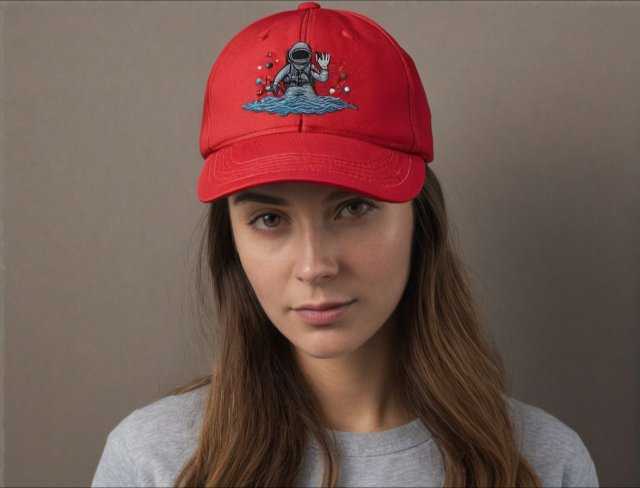
• Environmental Responsibility
In an era of increasing environmental awareness, responsible practices in material sourcing, production, and disposal are integral to quality control. Embroidery professionals may opt for sustainable materials, such as organic cotton or recycled polyester threads, to minimize environmental impact. Waste reduction strategies, such as efficient thread management and recycling programs, further demonstrate a commitment to sustainability while maintaining high standards of quality and presentation.
Conclusion
Creating custom embroidered logos is a meticulous art that blends creative vision with technical expertise. From conceptualization and design to material selection, digitization, and quality control, each phase plays a pivotal role in delivering logos that not only reflect a brand’s identity but also stand the test of time. By leveraging advanced technology and a deep understanding of materials, embroiderers transform ideas into tangible expressions of craftsmanship and quality. The process is as much about precision and attention to detail as it is about creativity and innovation, ensuring that every embroidered logo meets exacting standards of excellence.
Embroidery professionals continually strive for perfection, embracing feedback and advancing techniques to stay ahead in a competitive market. Beyond aesthetics, they prioritize durability and functionality, selecting materials and threads that enhance both the visual appeal and performance of the logo across diverse applications. Client satisfaction remains at the heart of their endeavors, driving them to deliver logos that not only meet but exceed expectations, fostering lasting relationships built on trust and quality craftsmanship.
Now that you have read through this article, feel free to SHOP for products we have created. If you are looking for something special which isn’t in our store, feel free to contact us.

